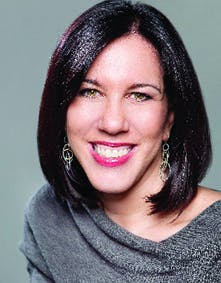3 dental marketing hacks to combat no-shows and patient attrition
I’ve helped businesses from a diverse range of industries with their marketing, and I can confidently say that dentistry is particularly tough to navigate. You have circumstances that others don’t. For one, practices are constantly losing patients thanks to things like switching insurances, patient relocation, etc. To combat this high attrition rate, practices need to vigorously prospect with multiple marketing efforts and utilize effective patient retention strategies. On top of that, dentists need to find an effective way to decrease appointment cancellations and no-shows.
What works for one practice may not work for another, depending on an endless list of variables. However, there are several dental marketing tactics that reliably minimize the negative effects of patient turnover and no-shows to help you maintain a growing practice.
Replace up to 17% of patient attrition with this proven tactic
Research shows that, on average, practices lose approximately 17% of their active patients per year.1 While you should absolutely put in efforts to retain more patients (more on that below), there are going to inevitably be patients who move or switch dentists due to insurance changes out of your control. The only way to truly grow your practice, despite attrition, is to prospect for new patients and do it consistently.
Everyone needs a dentist; it’s just a matter of when. Practices that consistently market to their communities become the go-to dental offices in their area. There are a wide variety of ways you can market a practice (and you may be doing many of these already). Whatever marketing medium you choose, consistency is essential when driving new patient acquisition.
I recommend that you stick to a marketing effort for 12 months before you determine its success or failure. I’m not telling you this because I own a marketing company. I have seen time and time again (my company has over 6,000 dental clients) that marketing results snowball, and you won’t have an accurate measure until you’ve done something consistently.
Here are some marketing channels I would urge you to consider implementing if you aren’t currently doing them consistently:
1. Search engine optimization: Every dentist should optimize their website using standard search engine optimization (SEO) practices. Some prospective patients just search Google and pick one of the top choices when selecting a dentist. SEO helps ensure that your practice shows up when they search; the closer to the first result, the better.
The first step to ranking higher on Google is making sure your practice has a robust Google MyBusiness account that contains relevant information such as your address, industry, services offered, and contact information. Make sure the contact information on your Google listing matches your website exactly. A slight difference even in terms of a suite number can confuse Google into not giving you proper credit for where you should be ranking.
You can hire a firm to do this for you (we have built a team to offer this based on high demand), or you can learn it yourself and implement over time. (I recommend the blog Backlinko for this.) The main drawback of SEO is that it can take six months or longer of consistent implementation before you start to see a return on your investment. To keep new patient numbers up in the interim, many dentists turn to paid digital ads.
2. Digital advertising (Facebook, Instagram, Google, etc.): The digital platforms I’ve seen with the best returns are Facebook, Instagram, and Google. These work best when you target specific demographics and geographical areas, which I’ll expand on later. They’re fairly cost-effective as long as you consistently optimize them and manage the budget.
However, digital ad costs are significantly higher this year; businesses are seeing costs increase between 30% to 150%, making it difficult to keep your cost per new patient acquired in a profitable range.2
Is anybody out there? Getting seen on social media
3. Direct mail: Direct mail has some unique qualities that give it a leg up over other methods; in fact, it actually became cheaper in August to mail larger postcards first class.3 Dentists who mail repeatedly—usually monthly—to a targeted area based on a proximity and/or a specific demographic in their area see the best results. A deep dive into our dental marketing success data showed that campaigns with consistent mailings were 700% more likely to bring in new patients than one-off campaigns.4
Everyone loves free stuff: Data-driven strategies to boost your conversions and revenue
Direct mail may seem old school, but technology has introduced automations that make mailings just as targeted, responsive, and programmable as a thank-you email. A good place for dentists to trial these automations is a New in Town program, which automatically sends mail to every new resident in a predetermined area daily or weekly. What better time to reach a prospective patient than when they are brand new to an area and in need of a new dentist? One client of mine converted 73 new residents into patients using this method for a year.5
Automated mailings can create a more personalized dentist-patient relationship. For example, a thank-you postcard mailing can be automatically triggered when a patient pays their fees. Or you could sync your client database with a direct mail campaign to send happy birthday postcards to make patients feel special on their day.
A pair of Temple University studies show that when compared to digital, direct mail holds our attention better, triggers a more robust emotional response, and is easier to remember—all things that work for you when trying to keep patients around.6
No matter what channels you choose to be in your arsenal, make sure you’re doing them consistently!
Reduce 15% of appointment cancellations with reminder systems
Every missed appointment is thousands of dollars lost in revenue. Most sources estimate that 10%–15% of total dental appointments are canceled, which adds up quickly. Reminder systems are imperative in getting this number down. Which method works best? Well, each channel has its pros and cons:
Calling and voicemail
Pros: If you get them on the phone, you know they received the message; cheap but time consuming.
Cons: The Harvard Business Review wants you to give up on voicemail communications completely, citing a year-over-year voicemail volume drop of 8%.7
Email and SMS reminders
Pros: Cheap automated systems save time; easy for patients to read.
Cons: In a study that assessed the effectiveness of text messages as dental appointment reminders, researchers found that text messaging was fairly ineffective.8 A data-driven analysis found that 35% of emails are never even opened.9
Postcards
Pros: Easily automated to save time. Next to impossible to miss in the mailbox. Has the most extended shelf life.
Cons: Likely the most expensive reminder system. Each method will appeal to different patients; younger patients may prefer text reminders, while older generations may prefer voicemail. There may not be a one-size-fits-all solution for reminding patients to come in. The only way to know which works best for your practice is to try them all and track your results to see what works so that you’re making an informed decision.
Increase profit margins 25% with a formal referral system
While you may already generate referrals organically for good service, a structured referral system will drastically increase those numbers. A formal referral system can look like this:
- When a patient checks out and gives positive feedback, your front desk person asks for a referral. Include it in a checklist so that it’s formalized and won’t be skipped.
- Humans are busy and forgetful creatures. Even if they agreed to refer someone, they may forget, so communicate your referral program regularly—send referral cards out with statements, mention it at the bottom of your emails, post about it on social media regularly, etc.
- Assign one team member the task of tracking all the incoming referrals.
- To double down on your chances for a referral, include referral incentives.
A client of mine, Dr. Jason Monroe of Village Green Dental, increased profit margins 25% on referral marketing alone.10 His program focused on monthly prize drawings (giving away iPads, flat-screen TVs, and more), and anyone who referred a new patient that month was entered to win.
This might sound like an expensive system, but just one or two referrals more than pays for each month’s prize, and it doesn’t even include the extra marketing he got from winners sharing their amazing prizes on social media with friends and family.
Dr. Monroe ended up increasing his new-patient numbers 46% in one year. He shared how he did it with me in a two-minute interview you can see at postcardmania.com/dr-monroe.
References
1. The most important number—the active patient count. Henry Schein Professional Practice Transitions. November 14, 2014. https://www.henryschein.com/us-en/images/dental/activepatientcount.pdf
2. Sullivan L. More evidence that Ad CPM, CPC prices keep rising. MediaPost. Search & Performance Marketing Daily. August 3, 2021. https://www.mediapost.com/publications/article/365661/more-evidence-that-ad-cpm-cpc-prices-keep-rising.html
3. Price list. United States Postal Service, Notice 123. August 29, 2021. https://pe.usps.com/text/dmm300/Notice123.htm
4. Gendusa J. Everyone loves free stuff: Data-driven strategies to boost your conversions and revenue. Dental Economics. July 12, 2021. https://www.dentaleconomics.com/practice/marketing/article/14204918/everyone-loves-free-stuff-datadriven-strategies-to-boost-your-conversions-and-revenue
5. Dental service direct mail advertising case study: Parmer Oaks Dental Care. PostcardMania. https://www.postcardmania.com/case-studies/dental-services/cedar-park-tx/
6. Is direct mail advertising effective? USPS Delivers. https://www.uspsdelivers.com/why-direct-mail-is-more-memorable/
7. Schrage M. Time to hang up on voice mail. Harvard Bus Rev. September 30, 2013. https://hbr.org/2013/09/time-to-hang-up-on-voice-mail
8. Nelson TM, Berg JH, Bell JF, et al. Assessing the effectiveness of text messages as appointment reminders in a pediatric dental setting. J Am Dent Assoc. 2011;142(4):397-405. doi:10.14219/jada.archive.2011.0194
9. Kryzhanovska A. 35% of emails are left unread: a data-driven analysis of email use. Mailbird. October 30, 2020. https://www.getmailbird.com/email-use-statistics/
10. Gendusa J. 4 marketing principles that led to 46% more patients in one year. Dental Economics. August 25, 2016. https://www.dentaleconomics.com/16388293
About the Author

Joy Gendusa
Founder and CEO, PostcardMania
Joy Gendusa is the founder and CEO of PostcardMania. Using just postcards, a phone, and a computer, Gendusa built PostcardMania from a one-person start-up into an industry leader. PostcardMania serves 102,962 clients, including 6,980 dentists. Need help promoting your practice? Call one of PostcardMania’s dental marketing consultants at (844) 269-1836, or email Gendusa at [email protected].

